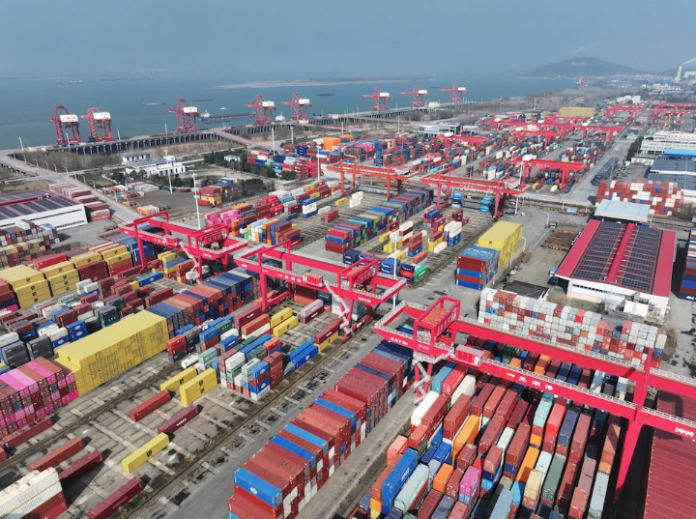The ongoing trade tensions between the United States and China have forced Chinese exporters to aggressively seek alternative markets, creating a highly competitive and volatile global landscape. With the recent 10% tariff hike imposed by the U.S., businesses that once relied on American consumers are now pivoting toward Asia, Africa, and Latin America. However, this shift is triggering intense price wars, reduced profitability, and potential economic struggles at home.
A Race for Survival
Jeremy Fang, a sales officer at a Chinese aluminum manufacturing company, describes the current situation as a “mad rat race.” Many Chinese producers are simultaneously targeting the same international markets, leading to fierce competition, lower prices, and shrinking profit margins. “The cake is only that big,” Fang explains. “We all want a piece, so the competition will get intense.”
China exports more than $400 billion worth of goods to the U.S. annually. With rising trade restrictions, Chinese manufacturers are flooding other regions with products, hoping to offset losses. However, these new markets cannot match the consumption power of the U.S., creating a scenario where an oversupply of goods could destabilize industries worldwide.
The Risk of Global Price Wars
As Chinese companies fight for market share in new regions, analysts warn of prolonged price wars. Frederic Neumann, HSBC’s chief Asia economist, points out that while diversification is a logical move, it may not be sustainable. “The real risk is that these receiving countries might eventually impose their own restrictions on China due to pressure from local industries,” Neumann cautions.
This concern is not unfounded. Over the past year, the European Union has raised tariffs on Chinese electric vehicles, while countries like India and Indonesia have also tightened trade policies on Chinese imports. If more governments follow suit, Chinese exporters will face even greater obstacles in their global expansion efforts.
Challenges for Small and Medium-Sized Businesses
Large corporations like BYD and DeepSeek have strong supply chains and brand recognition, allowing them to adapt quickly. However, smaller firms are struggling to survive. Richard Chen, who runs a Christmas decorations factory in southern China, reveals that his business is operating on razor-thin margins. “We tried to enter Poland, but their consumers don’t buy like Americans,” he laments. “This is the worst I’ve ever seen.”
Similarly, a manager at a bathtub factory in Shijiazhuang explains that U.S. retailers are demanding a 10% price reduction on products. To cope, his company has already cut worker wages by 10-15%, but further cuts could threaten job stability.
Economic Ripple Effects in China
The impact of this global trade shift is not just felt abroad; it is also accelerating economic challenges at home. Wage reductions, job losses, and reduced factory investments are fueling deflationary pressures in China. Li Yongqi, manager of Jialifu Electric Vehicle Company, worries that declining household incomes will weaken domestic demand, further shrinking his company’s profits by up to 30%.

Chinese authorities have recognized the risks of destructive competition. The Communist Party’s Politburo has urged industries to avoid excessive price cutting, while some business leaders have called for government intervention to manage overcapacity.
The Road Ahead for China’s Economy
Economist Alicia Garcia-Herrero from Natixis believes the only sustainable solution is for China to scale back production. “Nobody is going to take your products forever,” she warns. “If China wants long-term economic growth, it must boost domestic consumption.”
Neumann from HSBC agrees, emphasizing that stronger domestic demand could help reduce trade tensions while stabilizing China’s economy. If the government successfully implements policies to encourage consumer spending, it may create a more balanced and resilient economy in the long run.
As Chinese exporters navigate this turbulent landscape, businesses will need to adapt quickly or risk being left behind in an increasingly crowded and competitive global market.



